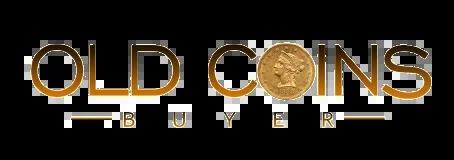
For those fascinated by history, heritage, and the legacy of currency, coin collecting is a rewarding passion. But whether you're an amateur or someone selling coins on platforms like Old Coin Buyers, the most critical skill is knowing how to identify genuine old coins. With a rising market for rare and valuable coins, counterfeit coins are also increasing, making it essential to verify authenticity before any transaction.
This beginner’s guide is crafted to help you understand the fundamentals of spotting genuine old coins, especially if you're planning to engage with trusted coin buying platforms like Old Coin Buyers.
Why Authenticity Matters in Coin Collecting
Old coins carry historical, cultural, and monetary value. Whether it’s a British India coin, Mughal-era rupee, or early Republic India currency, the coin’s authenticity directly affects its worth. Unfortunately, many counterfeiters replicate high-value coins and sell them to unsuspecting collectors or sellers.
Before listing your collection with trusted names like Old Coin Buyers, it’s crucial to know the authenticity checks that experts use.
1. Understand the Coin’s History and Design
Every coin has a story. Genuine old coins are designed to reflect a certain period, ruler, and mint. Start by researching:
Minting year
Ruler’s face or emblem
Metal composition
Official inscriptions and symbols
Compare your coin with verified images from coin catalogues or reliable websites. Most forgeries fail to match these design elements perfectly.
2. Check the Weight and Diameter
Genuine coins are made using strict minting standards. Use a digital scale and caliper to:
Measure the weight in grams
Compare the diameter in mm
Refer to official minting data for comparison. Any significant deviation could indicate a counterfeit.
For example, a British India One Rupee coin from 1906 should weigh around 11.66 grams. If your coin weighs much more or less, it may not be genuine.
3. Inspect the Metal Composition
Old coins were made of specific metals such as:
Silver (for many British India and early Republic India coins)
Copper
Nickel
Bronze
Use a magnet to test non-magnetic coins (e.g., silver should not stick to a magnet). Also, color consistency, tarnishing, and luster can reveal clues about the metal's authenticity.
4. Look for Mint Marks and Lettering
Many genuine old coins have mint marks that indicate where they were struck. For example:
‘B’ for Bombay
‘C’ for Calcutta
‘L’ for Lahore
No mint mark often indicates Calcutta (during the British era)
Lettering, font style, and alignment must also be crisp and symmetrical. Counterfeit coins usually have sloppy or uneven inscriptions.
5. Use a Magnifying Glass or Microscope
A 10x jeweler’s loupe or microscope will reveal minute details such as:
Edge notching or reeding
Micro lettering errors
Surface inconsistencies
Genuine coins often display wear in high relief areas, whereas fakes might have uniform surface wear or unnatural aging.
6. Perform a Sound Test (Ping Test)
A simple ping test can tell a lot about your coin’s composition. Tap the coin gently and listen to the resonance. Silver coins have a high-pitched, clear ring, while counterfeit ones often produce a dull sound.
You can also compare the sound with a known genuine coin for better judgment.
7. Get Expert Evaluation
If in doubt, contact professional coin experts or reach out to platforms like Old Coin Buyers that offer valuation and authentication services. Expert numismatists can evaluate your coin based on:
Rarity
Condition (graded from Poor to Mint State)
Market demand
Historical significance
Platforms like Old Coin Buyers often deal with collectors and dealers nationwide and provide reliable insights into coin authenticity and pricing.
8. Beware of Common Counterfeit Red Flags
Unrealistic shine or overly clean surfaces
Perfect condition for supposedly ancient coins
Duplicate markings across multiple coins
Incorrect historical details (e.g., wrong ruler for the mentioned year)
Always trust your instincts and avoid deals that seem “too good to be true.”
Final Thoughts
Identifying genuine old coins requires a combination of research, observation, and basic tools. As you grow in your collecting journey, these skills will become second nature. Whether you're building a collection or planning to sell coins through trusted buyers like Old Coin Buyers, ensuring the authenticity of your coins is non-negotiable.
Coin collecting is more than a hobby—it's an investment in history. Learn to verify every coin before making a move, and you’ll be better prepared to preserve or profit from your collection.




















Write a comment ...